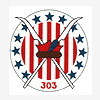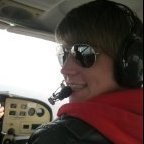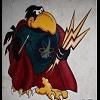-
Posts
236 -
Joined
-
Last visited
About RZP
- Currently Viewing Topic: Barnham's "white dots" Malta Spitfire
- Birthday 03/02/1958
Contact Methods
-
Website URL
http://
-
ICQ
0
Profile Information
-
Gender
Male
-
Location
Kingston, Ontario, Canada
-
Interests
Polish Air Force, RCAF and Polish Mustangs, FAA
RZP's Achievements

Established Member (3/9)
344
Reputation
-
I read somewhere that 316 may not have had the invasion stripes applied as they were assigned to combat V-1s in ADGB. I can’t remember if it was an attempt to reduce drag or just that ADGB aircraft were not required to wear the stripes? I’ve asked my father, who was an engine fitter with 316 at the time, but he does not remember applying stripes. At 97 his memory isn’t what it was unfortunately. I have a photo somewhere of a 316 Squadron Mustang with the stripes on the underside of the flaps only. Happy to be proven wrong on the above. Whatever you do, do not combine the invasion stripes with the red and white nose bands as in the ICM box art. The red and white bands weren’t applied until March 1945 I believe. Richard
-
Mr. Martin’s books are essential for anyone researching RCAF markings! No connection, just a happy customer and owner of the two volumes. Richard
-

P-51D Mustang info needed, Canadian, Polish or RAF
RZP replied to Winnbowman's topic in Aircraft WWII
That’s a lot of information people have kindly provided, hope it hasn’t confused you even more. Simple answer is, yes 442 Squadron RCAF flew the Mustang IV during the last months of the war. There were NMF examples in the squadron, but they were mostly P-51Ks which had a different prop as has been pointed out. Unfortunately there was only one set of decals in 1/72 for an NMF example and they are long out of print, and not entirely accurate. I have a set and you can have it, and I can provide corrections to make it easier. 303 Squadron also flew NMF Mustangs at the end, but they were again mostly P-51Ks. There are decals available and I can send you a full set with drawings if you like, along with the correct propellor. If you’re not tied to a wartime example, the RCAF bought 130 after the war, all P-51Ds. They served from 1947 to 1956. I’m biased but they were among the most colourful of any Mustangs. I have a spare set of those as well. I provided research material for the decal company. Polish and RCAF Mustangs are an obsession of mine. 🙂 Richard -
This looks like a promising film about a tragic story, the bombing of Gestapo Headquarters in Copenhagen, March 1945. Operation Carthage March 21, 1945 Richard
- 24 replies
-
- 10
-

-

P-51B inner gear doors - the diagonal-ish section, colour and function?
RZP replied to Paramedic's topic in Aircraft WWII
Thanks Tomaz, it’s all still confusing to everyone…doors up/down, flaps up/down…and all kinds of combinations. All we can go by is the photos, and you’re right, so many of them show the doors firmly up. We all have our preferences, some like the clean sleek look, others like everything hanging. Like you said, no one can say you’re wrong however you build them...well, except one flap up, one flap down. 🙂 Richard -

P-51B inner gear doors - the diagonal-ish section, colour and function?
RZP replied to Paramedic's topic in Aircraft WWII
Interesting, just to open that can slightly, I find the opposite. Examining just a couple of hundred of my photos of D/K Mustangs of different air forces (mostly RCAF, Polish and Commonwealth, but also including the USAAF/USAF), I find as many or more photos with clamshell doors down, it's far from rare. Looking through photos in Mustang books I find the same. Lowering the inner doors was part of the shutdown and parking checklist for the D/K. Once parked (from the USAAF manual): "Fairing door emergency release handle pulled out and down. ( when fairing doors are open, landing gear handle is mechanically locked in the DN position.) " The RCAF Pilot's Operating Instructions are similar under End of Flight Procedure: "Pull undercarriage fairing doors emergency release to open doors and relieve pressure on hydraulic system." When the doors were released and fully down, a mechanical link was engaged with the landing gear handle which prevented the handle from accidentally being pulled into the UP position. An explanation from one of the leading Mustang restoration experts, Glenn Wegman (from P-51 Special Interest Group): "When on the ground, gear down, with the engine running, the only thing holding the inner doors closed is the hydraulic pressure. When the engine is shut off the pressure should remain in the system for a while and hold the doors closed. Standard procedure though, is to pull the tee handle when the engine is shut down to dump the hydraulic pressure allowing the doors to fall open. There is a safety latch operated by the left inner door that locks out the gear handle from being raised if the doors are open when the airplane is sitting on the ground. Once the hydraulic pressure builds up after engine start and the doors close, the gear handle can be raised. Dumping the pressure after shut down opens the doors and subsequently lessens the chance of inadvertently raising the gear handle." when the plane is on the ground which would cause the tail gear to collapse. That's why it is standard practice to dump the pressure upon engine shut down." A modeller would be fine setting the inner doors in any position between fully closed and dropped, but personally I would drop them. According to the shut down checklist, the flaps should also be lowered fully "to prevent people walking on them", but that didn't always happen. Just some thoughts. Richard -
Beautiful clean Mustang Paul! Well done, always lovely to see a Polish Mustang. The NMF Mustang IVs delivered to the RAF were not painted silver. They were accepted and delivered to the squadrons in the factory finish, bare metal with wings puttied and painted. 3 Squadron RAAF Mustang IV in Italy. It still has the USAAF data block under the windscreen. Flying Officer Roger "Rocky" Robiallard posing with his 442 Squadron RCAF Mustang IV. Clearly still a fairly new and clean aircraft, definitely bare metal. 303 Squadron, Polish Air Force, Mustang IV at Hethel November 1946. My father, LAC Jozef Palimaka, is third from left. Although the photo is not very sharp (scanned from a tiny print), you can see the different shades of aluminum on the panels.
-
I remember a series of kits (maybe 1/100 or smaller?) that came in a package similar to an oversized matchbook. I think the company was called Eldon. They were inexpensive and available in drug stores and department stores in Canada in the early 1970s. I think it was quite an extensive range, from the First World War to an X-15. Richard
-
Thanks Chris! I really appreciate you looking in! Life kinda got in the way for a while. My little obsession with RCAF Mustangs gave me the opportunity to be part of the team that researched and designed the markings for its bigger sister: Richard
-
Thank you, that's very kind. It was a lot of work but I learned a lot and got over my fear of scratch-building and modifying parts. Wow, thank you! Spraying the exhaust staining made me nervous, especially after the initial disaster. I learned that subtle is better. Thanks very much! I've already started another one... Richard
-
I'm nearly at the end of this build after more than four years. It's on its feet and all the nav lights and landing gear doors are attached. I still need to add the antenna wire and the pulley block that guides it through the bubble canopy...well that and some paint touch-ups here and there. If anyone cares to see in-progress photos the link is at the end. The weathering was done with water-soluble graphite pencils that I found in an art supply store in town. The beauty of it is that it can be wiped off with a damp cloth if you are not happy with the results. With a sharp point you can wet it and follow the panel lines. It will lay down a fine line of sludge which you can then wipe in the direction of the airflow. It can also outline access hatches and panels. The thing to remember, which I learned the hard way, was that it darkens considerably when hit with a clear coat. The exhaust stains were another learning experience. I had never applied exhaust stains with an airbrush before, and the first attempt was with extremely thinned black paint and it was far too dark, and black. I managed to remove it all without too much trauma. The second attempt was with my own mix of dark grey and red-brown thinned to almost water. I learned that the perfect amount of stain was about two or three passes BEFORE you think it looks good. 🙂 Oddly enough in some light it looks thin and grey, in other lighting it looks very dark. I'm not touching it again! Sorry about the weird backgrounds, I was experimenting with lighting and background colours with my DSLR camera. Hopefully I'll do better when it's done.
-
There’s always hope. ModelMonkey has released a number of beautiful resin sets to upgrade and correct the Airfix 1/24 scale Mustang over the last couple of years. He has started to do Spitfire parts, hopefully he could be convinced to do more. Richard
-
Thank you! The shapes and dimensions are all there, just needs four years of work, lol. I've loved every minute, almost. And I agree with you on the Maple Leaf roundels, especially in the case of the Mustangs.The RCAF Auxiliary Squadron markings were among the most attractive anywhere. Richard
- 72 replies
-
- 1/24 Airfix Mustang
- 1/24 Airfix
-
(and 1 more)
Tagged with:
-
I've just sat with my morning coffee and gone through this brilliant build! I love these old 1/24 scale Airfix kits, but they are a bit of a double-edged sword. I've been working on their Mustang. They will absorb as much effort as you are willing to put in, but at the same time they really demand all that work to bring them to an acceptable standard. Our expectations have changed a lot in 50 odd years. That being said, their shapes and dimensions are accurate for the most part. I just love the care you've taken and the research you've done to get the details right, and the creative way you've gone about building details from scratch. The Waldron placards really do bring the cockpit to life, I wish they were still available. And that Airscale instrument panel is gorgeous. The correction you've made to the dihedral makes all the difference! Just a superb job so far, and looking forward to watching your progress. It will provide anyone else building one an easy to follow guide. More coffee... Richard
-
RZP started following Matchbox/Revell 1/32 Spitfire Mk 22/24
-

Matchbox/Revell 1/32 Spitfire Mk 22/24
RZP replied to Robin-42's topic in Work in Progress - Aircraft
Wow! Just came across this thread, and it's a masterclass in improving and correcting an old kit. OK...maybe a masterclass in stubbornness too. 🙂 I love your solution for the horizontal stabilizers. I just filled your profile with likes. You've combined using aftermarket improvements (that are sometimes not such a good fit either) and good old-fashioned modelling techniques. What you've done is brilliant, and should also help others wanting to build the kit to a better standard. I'm one of them, I have the Matchbox kit and plan to convert it to a Seafire 47. This will be a great help in correcting a lot of faults in the kit. I bought the Iconicair nose correction, which is hollow, and hopefully easier to work with. I also have the Freightdog Seafire 47 conversion, the Master cannon barrels, Mastercaster interior set and a box full of 1/32 Spitfire spare bits. I'll definitely be following this, it'll be a guide for my attempt...after I finish the 1/24 Mustang. I'll let you do all the hard work first. 😉 Richard- 118 replies
-
- 2
-








